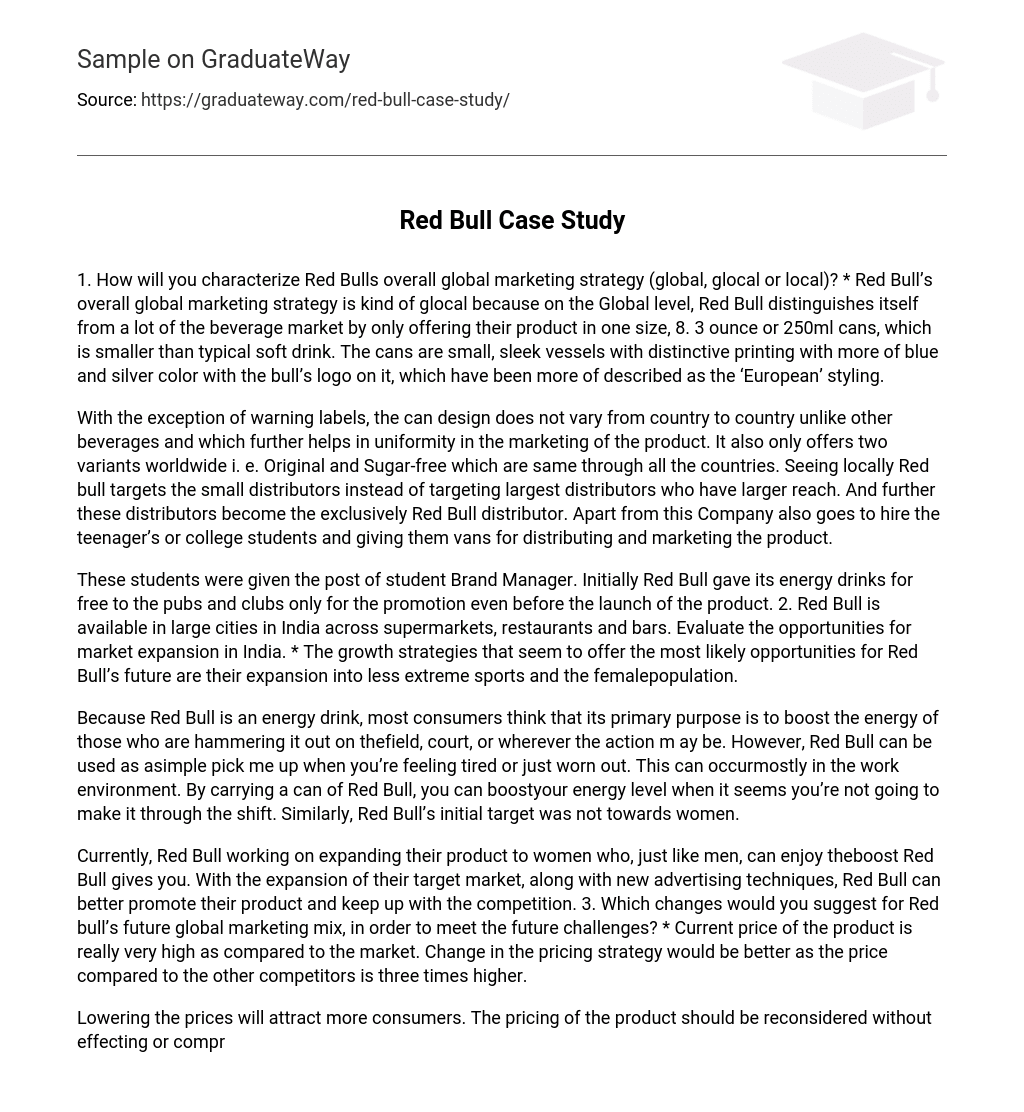Red Bull’s global marketing strategy can be characterized as glocal. On a global level, Red Bull sets itself apart from other beverages by offering its product in only one size, 8.3 ounce or 250ml cans. These cans have a sleek design with distinctive printing that features the bull’s logo and is predominantly blue and silver in color, which is often described as having a “European” style.
The design of the can remains consistent across countries, except for warning labels, ensuring uniformity in marketing the product. There are only two variants available globally: Original and Sugar-free, which are the same in all countries. Red Bull focuses on local small distributors rather than larger ones to ensure wider distribution. These distributors become exclusive Red Bull distributors. Additionally, the company hires teenagers or college students and provides them with vans to distribute and market the product.
These students were given the post of student Brand Manager for Red Bull. Initially, Red Bull provided free energy drinks to pubs and clubs for promotion purposes, even before officially launching the product. Red Bull products can now be found in supermarkets, restaurants, and bars in large cities in India. The task at hand is to assess the potential for market expansion in India. The growth strategies that appear to hold the most promising opportunities for Red Bull’s future include expanding into less extreme sports and targeting the female population.
Although Red Bull is commonly known as an energy drink that enhances performance in sports, it can also be consumed as a quick energy fix when feeling fatigued or exhausted, particularly in the workplace. By having a can of Red Bull handy, you can increase your energy levels and persevere through your shift. Moreover, it should be noted that Red Bull’s initial marketing focus was not on women.
Red Bull is currently concentrating on broadening its product to include women, who can also benefit from the energy boost that Red Bull offers. By expanding their target market and utilizing new advertising tactics, Red Bull can effectively promote their product and remain competitive. To prepare for future challenges, I recommend altering Red Bull’s global marketing mix. Firstly, it would be wise to reevaluate the pricing of the product as it is presently considerably higher than the average in the market. Adjusting the pricing strategy would be advantageous since it surpasses that of competitors by three times.
Lowering the prices will draw more customers, and the price of the product should be reevaluated without jeopardizing the quality. Additionally, for the current marketing strategy, it is advisable to switch to larger distributors instead of smaller ones. Engaging larger distributors will enable the product to reach a larger audience, including untapped markets with limited or no reach. This adjustment can enhance the product’s visibility and increase sales significantly.
Increasing the number of television commercials can be beneficial for the product, as a larger portion of the population is currently engaged with television and the internet. Red Bull, a beverage, has only two options available, namely Original and Sugar-free. However, introducing new flavors in the market, such as cola or orange, with the same energy-boosting abilities, can significantly elevate the brand’s success. To determine the most appropriate segmentation criteria for International Market Selection (IMS) process for Red Bull, psychographic segmentation would be highly relevant.





